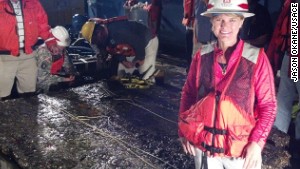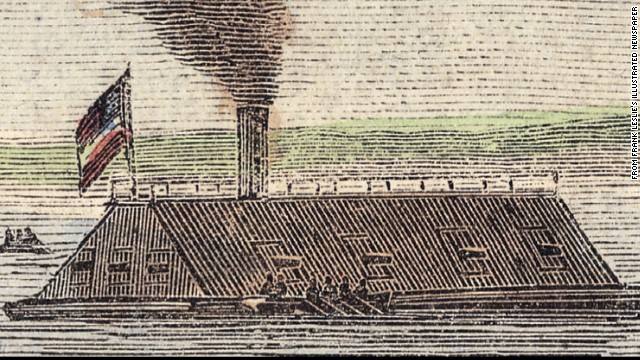Piece of Civil War ironclad brought to surface in Savannah
updated 7:38 AM EST, Thu November 14, 2013
STORY HIGHLIGHTS
- The CSS Georgia never fired a shot in anger during the Civil War
- She was scuttled rather than left to fall into Union hands during the war
- Now the ironclad must be moved so a shipping channel can be deepened
The Yankees, intent on taking Savannah, Georgia, refused to take on the CSS Georgia or other nearby defense obstructions. The CSS Georgia won the battle, but lost the war: The vessel was scuttled in December 1864 shortly before Union forces took Savannah and presented the city to President Abraham Lincoln as a Christmas present. The shipwreck has rested in the murky river since, rarely disturbed and having weathered the indignity of being hit during dredging a couple of times over the years.
This week, U.S. Navy divers, working with archaeologists for the U.S. Army Corps of Engineers, retrieved a 64-square-foot section of the ironclad, a precursor to the long-anticipated removal and preservation of the shipwreck so the city's vital shipping channel can be deepened.

U.S. Army Corps of Engineers archaeologist Julie Morgan next to the 5,000-pound piece of the ironclad.
The Corps expects to spend an estimated $9.5 million on the project. The removal is expected to begin in summer 2014, although funding has not been finalized. "Over time the ship's casemate, the iron-covered upper portion of the warship, came apart," the Corps' Savannah District said in a statement Wednesday. "The small portion removed Tuesday will give archaeologists the ability to assess the condition of the remainder of the ship."
That remainder includes remaining cannon, pieces of the ship's power plant and propeller shaft and two chunks of the casemate.
Officials are excited because the recovery of the casemates -- the compartments where artillery pieces were housed -- is believed to be the first of a Confederate ironclad. One of the surviving casemates is huge: 68 feet by 24 feet.
Divers, who have only a few feet of visibility, have been assessing the CSS Georgia wreck, so they know what they will be facing next summer. The site is adjacent to Old Fort Jackson and the main shipping channel. "This is just a small section. It was not cut off," Corps public affairs specialist Sandra Hudson said of the piece recovered Tuesday. "It was a small piece they found that would be the most viable to pull up."

Divers and this vessel were part of salvage operations in the swift Savannah River.
Archaeologists have the challenge of preserving the CSS Georgia through chemical and other means, making her iron stable so that the remains one day can be displayed in museums.
This 5,000-pound chunk of casemate, lifted by crane onto a barge, is being sent to Texas A&M University for archaeological testing, Hudson said.
The remains of the CSS Georgia may answer some mysteries, including its dimensions and the manner of construction. The casemates were made of railroad iron. The vessel could handle 10 guns, though fewer were onboard when it was destroyed.
There are no known blueprints for the ironclad, which was produced in Savannah in 1862 as part of a defensive naval squadron. Its wreckage straddles the borders of Georgia and South Carolina.
According to the Corps, Savannah's harbor will be deepened from 42 feet to 47 feet, "greatly expanding its capability to handle larger cargo vessels."
The ongoing expansion of the Panama Canal means bigger ships will need deeper water at ports around the United States. If things go as planned, the remains of the CSS Georgia and associated artifacts will be on the surface before the 150th anniversary of its sinking.

